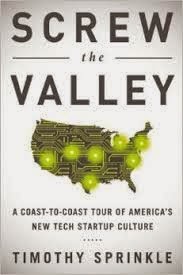It's 10 o'clock. Do You Know Where Your Carbon Is?
The global climate change movement howls about the evils of
carbon in the atmosphere, but most ignore how important carbon is to the soil.
It's vital to the health of plants and, in turn, to the health of everyone and
everything that eats those plants. In other words, it's vital to us all. But
humans have spent thousands of years taking lousy care of the soil, and we've
only gotten worse as the centuries have passed. As a result, the carbon content
of our soils has been severely depleted. So what to do? Read books, of course!
This is a book review site, after all.
Organic is so last year. Sustainable isn't enough. We need
to take action that regenerates the planet. That's a substantial part of the
message in Kristin Ohlson's book The
Soil Will Save Us: How Scientists, Farmers, and Foodies Are Healing the Soil to
Save the Planet. Yes, organic and sustainable are good, and they're
certainly way better than factory farming and pesticides, but there's more to
it than that. We need to heal the soil by replenishing carbon, which will help
heal the environment. The idea is that when carbon leaves the soil, it must go
somewhere, which means it ends up in the atmosphere. Ohlson points out that
even without burning fossil fuels, the carbon build-up in the atmosphere will
persist if we don't change our damaging farming and land use practices. We need
to put that carbon back in the soil where it can help us instead of kill us.
Want more fuel for your carbon fire? Try Grass, Soil, Hope: A Journey through Carbon
Country by Courtney White. For the animal lovers among us, pick up a copy
of Cows Save the Planet: And Other
Improbable Ways of Restoring Soil to Heal the Earth by Judith D. Schwartz.
An advantage of these books and others like them is that they leave readers
feeling hopeful. We're not at the mercy of polluting mega-corporations or factory
farms or genetic engineers. Individuals can take meaningful action in their own
backyards and at their local grocery stores.
Start planning your spring regenerative gardens now and be
optimistic about our planet's future!


